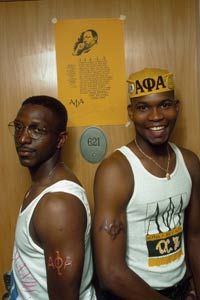Getting Branded: How It's Done
There are several approaches to branding (not counting the coat hanger). Possible tools include lasers, which use electricity to burn the burn designs into the skin; thermal cauterizers, wands that use electrically generated heat; and super-cooled metals, which produce burns by freezing the skin. The most common approach, though, is strike branding, which uses fire-heated metal [source: Knink]. This is the approach used in cattle branding. For humans, it goes something like this:
Design Selection
Advertisement
Scar tissue swells, so branding designs are typically pretty basic, lacking the tattoo-like intricacy that could be lost to the healing process. The brander usually draws the design onto the skin location and later traces it with the branding irons, which are usually a series of small pieces of metal in a variety of shapes. So a V branding would be two pieces of metal rather than a one V-shaped metal piece [source: Knink].
Preparation
Sterile gloves for the brander and masks for both the brander and the subject are essential, since the fumes produced when flesh burns are unhealthy and smell unpleasant. Ventilation in the branding room is also recommended for these reasons [source: Foxx]. The brander should thoroughly sterilize the branding iron, and the area to be branded should be shaved and cleaned.
Application
While exact procedures vary by artist, the brander typically heats the branding iron with a blowtorch. The iron must reach about 500 degrees Fahrenheit (260 degrees Celsius) to affect all three layers of skin: First the epidermis, then the dermis, and finally, the subcutaneous. The branding iron should burn through the first two layers and only graze the third layer [source: Parman].
The entire design is seldom applied in one strike. Instead, the metal is pressed to the skin in small sections, usually with some space in between each component because scar tissue will spread to fill in the gaps [source: Parman].
The brand is then cleaned, bandaged and wrapped in cellophane so no oxygen reaches it. Oxygen would speed the healing process, allowing the skin to repair itself. But the goal is scar tissue, not new, healthy skin. Bleeding and oozing are common, so many people cover the cellophane with a layer of medical tape so the fluids don't make a mess [source: Foxx].
